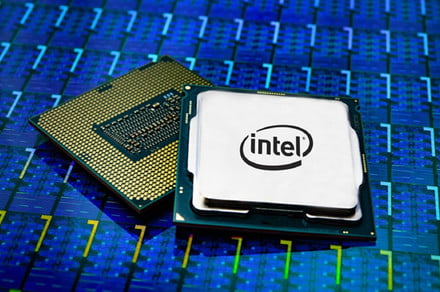A possible 10th-generation “Comet Lake-S” Intel desktop processor recently appeared in SiSoftware’s SANDRA database. The listing shows Intel’s unannounced chip running on a motherboard based on another unannounced product: The H470 chipset for Comet Lake-S CPUs.
The desktop processor in question lists six cores, 12 threads, 12MB of L3 cache, and 3MB of L2 cache. It will likely be a Core i5-10xxx part given the Comet Lake-S family may have up to 10 cores and 20 threads. Customers could see TDP ranges from 35 to 125 watts across the entire family too.
According to leaked details, Comet Lake-S will support DDR4 memory, Thunderbolt 3, USB 3.1 Gen 2 (10Gbps), 4K content and HDR, PCIe 3.0, Intel Optane, and more. Products will be based on Intel’s enhanced 14nm process node rather than the 10nm node used with the Ice Lake “U” and “Y” chips launched in August for ultrathin laptops and tablets.
The Core i5 listing follows another potential Comet Lake-S candidate that recently appeared in the SiSoftware database. Revealed by TUM_APISAK, this chip was listed as the Core i3-10100 packing four cores and eight threads (thanks to HyperThreading). Other features include 6MB of L3 cache, 1MB of L2 cache, and a 3.6GHz base frequency.
Intel will likely introduce its Comet Lake-S desktop processors before the end of 2019 or during the CES 2020 trade show in January. This will be the company’s third 10th-generation processor family launch, following the 10nm Ice Lake chips for mobile PCs launched in August. The second wave, Intel’s 14nm Comet Lake CPUs for mobile PCs, also launched in August, targeting higher core counts and better raw performance than the Ice Lake parts.
Intel originally kicked off its 14nm process node era with three “Broadwell” processors in 2014. Five years later, it’s desktop CPUs are still on 14nm, while AMD’s latest desktop processors, the Ryzen 3000 family, uses TSMC’s 7nm FinFET process node.
Unlike Intel, however, AMD doesn’t flood the desktop market during each generation. AMD’s current lineup for desktop includes five chips with core counts ranging between six and 12. The 16-core Ryzen 9 3950X reportedly follows in November alongside new Threadripper HEDT parts.
Support for PCI Express 4.0 is one of AMD’s biggest selling points with the Ryzen 3000 family. It doubles the bandwidth from the previous generation. It also provides a more reliable data flow between the CPU and connected components, like an SSD or graphics card.
Intel has yet to embrace PCI Express 4.0 in its processors, even with the upcoming Comet Lake-S chips seen in leaked slides. There’s plenty of time to jump on the bandwagon, however, before PCI Express 5.0 becomes the new norm.

